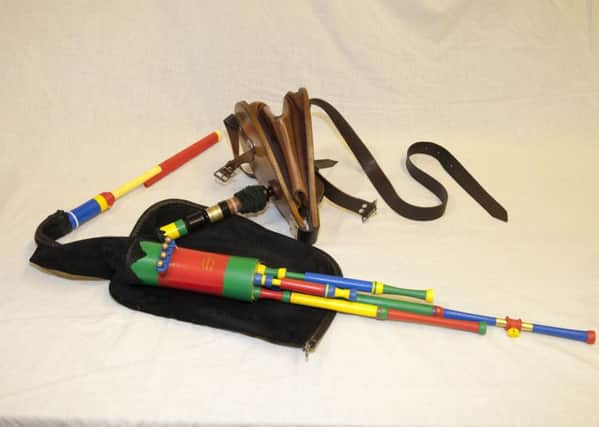Bagpipe chanter designed using 3D printing


Working from the attic of his Glasgow home, Donald Lindsay, 38, has designed, developed and produced a new type of chanter using a 3D printer.
The Scottish musician claims he has seen worldwide interest in the Lindsay System Chanter for the Scottish Small Pipes, which can play an octave higher than the conventional chanter
Advertisement
Hide AdAdvertisement
Hide AdA successful Kickstarter crowdfunding campaign has enabled Mr Lindsay to develop his ideas by working with a select group of pipers from all over the world.


The muscian combined his knowledge of musical instruments with the latest in computer technology – 3D printing.
“By designing on the computer, and printing out via two small 3D printers, I was able to explore all my ideas, and test them out without making design compromises” he said.
“Ultimately, my design could be reproduced using traditional methods.”
Speaking about the Lindsay System Chanter, Mr Lindsay said: “It can play a whole octave more than the conventional chanter and so it will allow pipers to play music previously inaccessible to them, such as popular Irish session tunes and Scots fiddle and indeed a wide range from many different styles, and can allow the composition of a whole new range of pipe tunes”.
The Lindsay System Chanter can be played using the same skills as the conventional chanter.
“It’s not necessary for pipers to learn a totally new instrument. It has no need of metal key work, so they can pick up a Lindsay System Chanter, and right away, they will be able to play all of their existing repertoire. Then they can develop the new potential the instrument offers at their own pace,” Donald said.
3D printing has also enabled the musician to explore an immense range of bright colours.
Advertisement
Hide AdAdvertisement
Hide AdAs well as producing pipes in traditional black, ivory and dark brown, he has multi-coloured sets.
Donald’s invention has gained interest from the world of 3D printing, witht the Scots inventor invited to display his work at major 3D Print events such as The 3D Print Show in London.
The Scottish Small Pipes is the smaller and quieter sibling of the famous Highland Pipes, and is much loved by folk musicians for its rich and gentle tones and suitability for indoor music, making it the second instrument of choice for many Pipers worldwide.
Although its lineage stretches back to the middle ages, over the last forty years, it has seen a resurgence in popularity, and few who have heard it will forget its charm and liveliness.